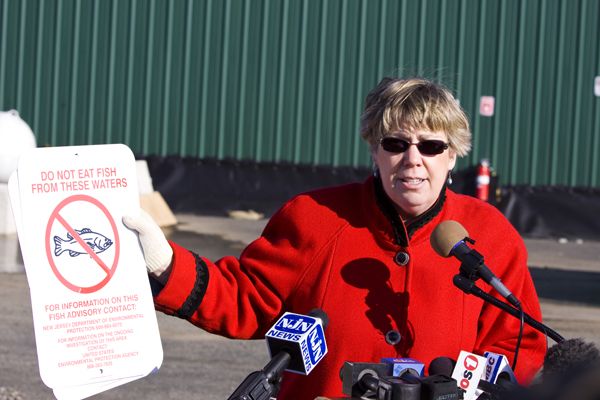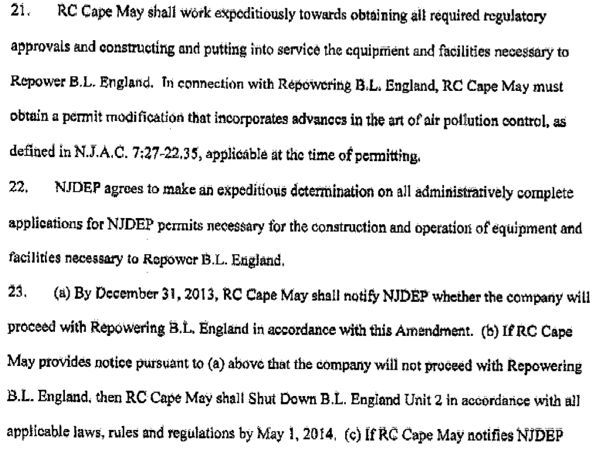Pumping Sand on Beaches Will Not Protect the NJ Shore – NJ “Drunk” on Federal Money and Pursuing A “Dangerous Path”
Beach Replenishment is Costly, Unsustainable, and Ineffective
NJ Needs a Coastal Climate Adaptation Plan That Addresses Land Use and Natural Dunes
- And so what we’re missing are opportunities to acquire some of these oceanfront properties, create a little bit of space where it doesn’t currently exist. And that space then can be used to build sand dunes, to restore dunes; and on the Bay side, restore wetlands and natural systems that will protect our communities. People always say it’s very expensive to buy that house, but we’re spending an awful lot of money, and we’ll continue to do so. And we’re doing it in a manner that’s not really sustainable over the long term. We’re going to have to keep spending the money, whether it’s beach nourishment, or sea walls, or whatever it may be. We have to adapt differently, and we have to pull back incrementally to create some additional space within which we can sustain these natural systems. ~~~~ Testimony of former DEP Commissioner Mark Mauriello (8/15/13)
- All of the impediments to meeting this 309 programmatic objective that appeared in the last New Jersey Coastal Zone Section 309 Assessment and Strategy remain. These include lobbying efforts of special interest groups, legal challenges to DEP permit decisions, provision of flood insurance through the National Flood Insurance Program, and public perception that large-scale beach nourishment projects eliminate vulnerability to coastal hazards. ~~~ NJ DEP, 2006
Sometimes it is truly amazing how a reporter can miss a story and/or get it completely wrong – today’s Bergen Record story: Sandy aid helps Jersey Shore rebuild to withstand the next storm– is one of the worst examples I’ve ever seen.
At exactly the moment we need quality reporting to drive an informed public debate about the need to change our basic approach to the shore, we get regurgitated status quo spin from the same old self interested sources.
At exactly the moment when Gov. Christie and the US Army Corps of Engineers are vulnerable to severe criticism for mismanaging the rebuild strategy, instead of holding them accountable, the Bergen Record praised their misguided efforts.
At the same time, the story reinforces false public perceptions and contributes to a false sense of security that invites more development to hazardous locations. DEP historically tried to warn the public about the very misconception in the Record story headline (those warnings were eliminated by Christie DEP, which should be another scandal). So, here it is.
Since Sandy struck last October, Gov. Christie has done dozens of shore events and at each one, he claims that dunes spared some shore towns.
The Gov. has stressed a dune system from Sandy Hook to Cape May as the key feature of his plan to protect the coast.
But, contrary to the Bergen Record story, the US Army Corprs of Engineers is NOT building dunes, is not designing dunes, and the Gov.’s dune system has not been funded and is not remotely on the horizon.
Beach replenishment is not dunes.
Meanwhile, the Gov. repeatedly has rejected consideration of climate change, sea level rise, and state land use planning and infrastructure regulations in his rebuild plans, while the only other tool he has used – elevating buildings to meet new FEMA elevations – also does not consider sea level rise and climate change.
The only reporter that has figured all this out and had the balls to tell the story is Brian Donohue from the Star Ledger, watch his superb video report: NJ’s Hurrican Sandy Rebuil: Are We Screwing It Up Again?
Meanwhile, just weeks ago, the Obama Administration released its Sandy Rebuild Taskforce Report. That report emphasized the need to consider climate change and plan for a more resilient shore. The role of “Green infrastructure” was highlighted as far superior to engineered measures:
Green Infrastructure
For the purposes of this Rebuilding Strategy, green infrastructure is defined as the integration of natural systems and processes, or engineered systems that mimic natural systems and processes, into investments in resilient infrastructure.110 Green infrastructure takes advantage of the services and natural defenses provided by land and water systems such as wetlands, natural areas, vegetated sand dunes, and forests, while contributing to the health and quality of life of America’s communities. […]
Communities at increasing risk from coastal storms can use green infrastructure approaches that restore degraded or lost natural systems (e.g., wetlands and sand dunes ecosystems) and other shoreline areas to enhance storm protection and reap the many benefits that are provided by these systems. There is also quantitative evidence supporting the importance of protecting intact systems where they exist because these systems may provide some wave attenuation capability, particularly in low-energy storm surges.111 Protecting, retaining, and enhancing these natural defenses should be considered as part of any coastal resilience strategy.
Adding even more clarity, former DEP Commissioner Mark Mauriello testified to the legislature on numerous flaws in the Gov.’s plan, especially noting the facts that climate change and sea level rise are here and that beach replenishment is costly, ineffective, and not sustainable.
Mauriello said NJ was “drunk” on federal money, pursuing a “dangerous path” in reliance on beach replenishment and was making huge mistakes and missing multiple opportunities to improve the shore and reduce future storm risks.
One of the concerns that I’ve recognized is that we have the Army Corps coming into the State to do a massive beach nourishment project for the whole coastline. The cost of that has been a little bit subject to debate. Clearly over $1 billion, maybe less than $2 billion— a lot of money coming in with sand.[…]
I express that concern on behalf of a number of public groups, nonprofits, and other interested folks such as myself who really see this as a dangerous path. Because the decisions we make now– And we’re a little bit drunk with all this money. I mean, this Federal appropriation is massive, and it’s unprecedented, and it sort of makes you a little bit less concerned about what you do because there is so much money. But we can’t lose site of the fact of being smart in how we spend the money. And we have to make sure we’re spending it on things that don’t come back to haunt us once the Federal money dries up, and the beaches erode, and we have these recurring storms. And it doesn’t have to be another Sandy. We all know that northeasters pound our coast, damage our infrastructure, and threaten our property and our people
To simplify and make all this abundantly clear, provide additional information, and connect the various dots, PEER issued a press release noting the conflicts between the Obama Sandy Rebuild Task Force Report and Gov. Christie’s rebuild plans.
PEER disclosed the fact that prior key DEP scientific findings and warning were deleted from the Christie DEP Reports, including findings about climate change risks and warnings about the limitations of beach replensihment:
|
Titus demonstrates (link) that in certain instances, structural engineering solutions will not be practical or economically feasible. In these cases future public and private development and redevelopment must be directed |
|
away from the hazardous areas. While some derogatorily refer to this option as “retreat,” from the perspective of sound planning based on the best available science, the concept actually involves “strategic adjustment.” Prudent planning requires that we expand upon the existing studies of the societal, economic, and environmental costs of possible mitigative actions while the greatest number of alternatives exist. The state’s coastal area continues to experience substantial seasonal and residential population increases. Conversion of formerly seasonal homes to year-round residences continues unabated. In many instances, formerly modest houses are replaced with significantly more expensive homes while property values continue to escalate. At the same time, risks associated with coastal hazards continue to increase. Factors such as escalating sea level rise and cyclical and possibly long-term increases in storm frequency and intensity threaten both the natural environment and built environment of New Jersey’s coast. Consequently, the ranking of the Coastal Hazards Section 309 enhancement area remains a high priority with the NJCMP. |
for full release, see: OBAMA – CHRISTIE EMBRACE ENDS OVER SANDY REBUILDING – Feds Resilient Strategy Runs Counter to New Jersey Armor Plating Vulnerable Coast
So, with all this context, focus, and good information on natural dunes, climate change, sea level rise, and criticism of beach replenishment, what does the Bergen Record write about?
The wonders of beach replenishment!!!! Celebrate the Status Quo that led to disaster!!!!
All while contributing to the mistaken public perception that DEP previously found an “impediment” to reducing coastal risks – a waring that has been deleted from Christie DEP documents – ironically compounding the scandal story that the Record missed:
public perception that large-scale beach nourishment projects eliminate vulnerability to coastal hazards.
My note to Record reporter Karen Sudol:
Karen – pumping sand on beaches is the costly, unsustainable and ineffective status quo and it is NOT going to protect the jersey shore.
DUNES – NATURAL DUNES – are what works best (with a land use plan that moves development out of the most vulnerable or hazardous locations).
You completely missed the story, which is that Gov. Christie has touted DUNES as what spared some towns from Sandy, and has PROMISED DUNES, but the Army Corps is not building DUNES, has not designed DUNES and has not funded DUNES. (and most of what the Gov. is calling dunes are really piles of sand that lack the structure of real natural dunes).
Meanwhile, the NJ DEP is approval all sorts of haphazard and discredited local engineered sea walls, revetments, et al that do not work.
Both of these situations are scandalous – and if you don’t believe me, read former DEP Commissioner Mauriello’s recent legislative testimony (begins on page 17):
http://www.njleg.state.nj.us/legislativepub/pubhear/senaen08152013.pdf
Sorry to be so harsh, but your wrote the wrong story at exactly the wrong time.



